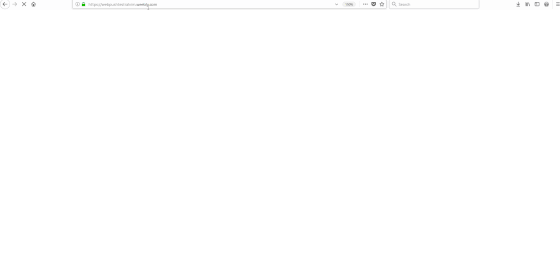What if you could communicate instantly, in real time and in a personalized way with your website’s visitors, without needing to have their personal information? Yes, it’s possible!
Contents
What are Web Push Notifications?
Web Push Notifications are instantaneous notifications sent to users through web browsers, such as Chrome, Firefox, and Opera. You probably already noticed, especially on websites who produce content like the online publication of newspapers or blogs, pop-ups in your browser, like this one:
Here in E-goi’s blog, we also use our own web push system. If by e-mail, the opt-in – your consent to give your personal information – happens through a registration form where it usually asks for the user’s email to register, with Web Push that is not necessary!
You only need one click to register (opt-in):
These notifications are sent through the browser (Chrome, Firefox or Opera), even if the browsers are closed. When they’re opened, the notifications will appear.
They are short, direct and objective messages, in contrast to emails, that involve a more extended communication.
The purpose of these notifications is to make users go to your website through the Landing Pages of those notifications, increasing user engagement with the website.
Web Push Notifications vs Push Mobile
Web Push Notifications don’t work just on computer browsers. They also work on devices like tablets or smartphones. But… Attention!, don’t confuse web push notifications with mobile push notifications.
Web push notifications are connected just to a website, and even though they appear on smartphones in the same way that the push notifications we’re already used to, these show up only when the user opens the browser, even if they don’t go to your website.
Mobile push notifications, on the other hand, are connected to apps that users have installed on their smartphones or tablets. This means that you can benefit from everything good that comes with push notifications without having necessarily to create an app.
Web Push Notifications: 5 Reasons to Use them + Examples
1. They keep your visitors informed
Web Push Notifications can be about various topics, and all of them have the purpose of attracting new users or bringing back old ones, to your website. You can, for example:
-
- Updating users on the new things happening on your website, whether it’s new products or other updates;
- Inform that one user about their abandoned cart if they get out of your website without finishing the purchase;
- Promote new content or new products on your website, or even discount campaigns;
2. They work on any device
As you already read, web push notifications work both on computers and on tablets or smartphones.
Whether it’s in a browser on your computer, whether it’s on a tablet or even on a smartphone, web push notifications can reach anyone. On a tablet or smartphone, from the moment the user allows web push notifications, they will show up in the same way that their apps’ push notifications do.
The only system that still doesn’t support web push notifications is iOS.
3. They are permission based
This means that when a user goes to your website, they’ll see an opt-in (it can be browser-based or personalised) asking if they wish to receive notifications from the website or not. From the moment they allow the website to send notifications, these will start showing up on a corner of the screen whenever the users open their browsers, even if they don’t go to your website.
4. Easier for users
With Web Push notifications, users don’t need to worry about writing their email or any other personal information to be able to receive news from your website.
So, being easy, simple and quick to activate notifications, and knowing that they can deactivate them as easily and anytime, more and more users choose to receive notifications. This means an increase in the number of opt-in’s, which helps to convert many users into regular visitors and clients.
5. More Effective
Web Push notifications go directly from your website to your clients or visitors screens. Since they show up directly on users’ desktops, instead of going to an inbox, there’s more probability of them clicking on a notification.
Besides, Web Push Notifications are personalised for each segment of clients, based on their interests. They are activated according to the user’s behaviour online. For example, if a user leaves your website without finishing the purchase, you can send an abandoned cart notification a few moments after he left your website.

